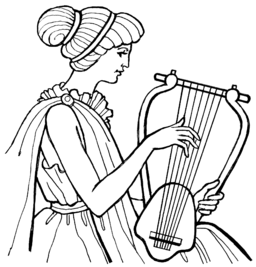As to performance, the women of the large, hardworking cast fare somewhat better than the men, having a higher proportion of music that though it remains generic, is singable. Many of the doubled and tripled supporting roles go unattributed in the accompanying booklet. They include the baritone who sings the part of a Ragged Man (shades of Lady Macbeth of Mzensk), who shows what sounds like the most technically complete voice of the male singers. Among the principals is an old acquaintance, Rosalind Elias, as Grandma (expired by the end of Act 1). It’s a long way from her La Bersis and Olgas of 1954 or her Erika in Vanessa of 1958, and her good mezzo, still attractive and functional, is more covered than of yore. But as of the aughts of our century, she was still hanging in.
Edward Thomas: Desire Under the Elms (libretto by Joe Masteroff, taken from the play by Eugene O’Neill). The London Symphony Orchestra, soloists, George Manahan, cond. Naxos American Opera Classics 8.669001-02.
Desire is an outlier in this grouping, inasmuch as it was not written in the present century, and has even less performance history behind it than the others. The composer, known primarily for his work in several popular genres, began collaborating on it with Masteroff (writer of the books for the musicals She Loves Me and Cabaret) in the 1970s, and after many readings, workshops, and concert outings it was finally given a three-performance stand at the New York City Center in 1989, its only fully staged production to date. However, it was well enough thought-of in the profession to be accorded this recording and to enlist some fairly fancy talent for it—the LSO, conductor Manahan (former music director of the New York City Opera), producer Thomas Z. Shepard, and the trio of principals (Victoria Livengood, Jerry Hadley, and James Morris) all represent a higher level in their respective positions than one would expect for a scarcely performed American opera. The recording was done in 2002, and I am sneaking it in on that basis and because I am intrigued by any serious effort to set a play by O’Neill, who for audacious reach and ambition (and, at his best, dramatic quality) remains America’s most important playwright. And plays have an obvious advantage over novels when it comes to operatic adaptation: their characters and lines of action have already been conceived in stage terms, and contained in a theatrical framework.
At the time of Desire’s first production (1924), O’Neill was already established as America’s most adventurous and advanced “serious” playwright—Anna Christie, The Emperor Jones, The Hairy Ape, and the early short sea plays had seen to that. But Desire was considered a big step forward for O’Neill, and for the maturation of American theatre. As recently as 2009, a solid Broadway revival (transferred from Chicago’s Goodman Theatre) showed that it still holds a measure of its power, though not of the box-office sort. The play sets the mythic tale of Phaedra and Hippolytus on a New England farm in 1850. To radically condense: old Ephraim Cabot, owner of the farm and father to three sons by two former wives, both deceased, has taken a third wife, the young and voluptuous Abbie. The two sons of the first wife have decided to strike out for California, land of golden promise, but their step-brother, Eben, remains behind, and following much inner conflict arising from his devotion to his dead mother, falls into an incestuous relationship with Abbie. A baby is born, whom Ephraim assumes to be his, but who is in reality Eben’s. Eben resolves to follow his half-brothers on the trek to California. Abbie, desperate to keep him with her, kills the baby to prove her love by destroying the incriminating evidence. At the last moment, Eben confesses his own complicity. Both he and Abbie are taken into custody by the Sheriff, and Ephraim is left alone with the farm, whose inheritance rights have been much at issue.

